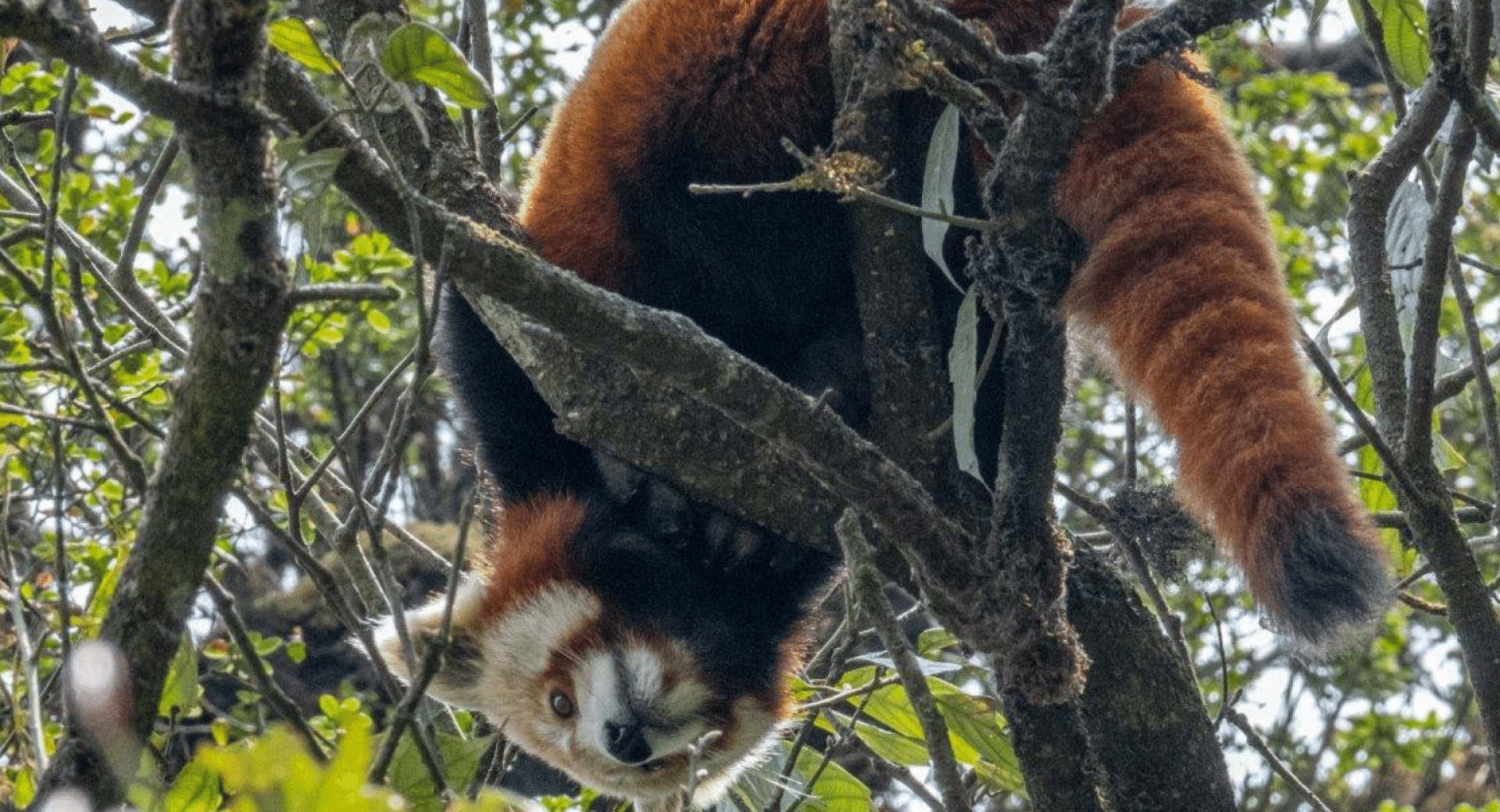
Part 1 of a 2 part series features the heroic people protecting red pandas and reforesting their threatened home.
"We are at the restoration area in Jaubari, Ilam. We started to reforest this area in 2015. There is a lot of barren land here."
Sonam Tashi Lama, Red Panda Network's (RPN) Program Coordinator, says this in episode 2 of the Habre Guff-Gaff: Conversing Conversation film series. You can see the devastating local deforestation when the film starts – there are about 1,000 hectares of barren land here – and why there is an urgent need to conserve this place. But then something comes into focus in the area beyond the barren land: the beginning of a new home for red pandas.
As Sonam begins to make his way into our restoration site of sprouting and towering bamboo, you might feel hopeful for the future. And you can start to see why Jaubari is vital for red panda conservation.
Sonam says our goal is to plant 50,000 trees in Jaubari in 2022. Improving habitat quality here is extremely important for red panda conservation.
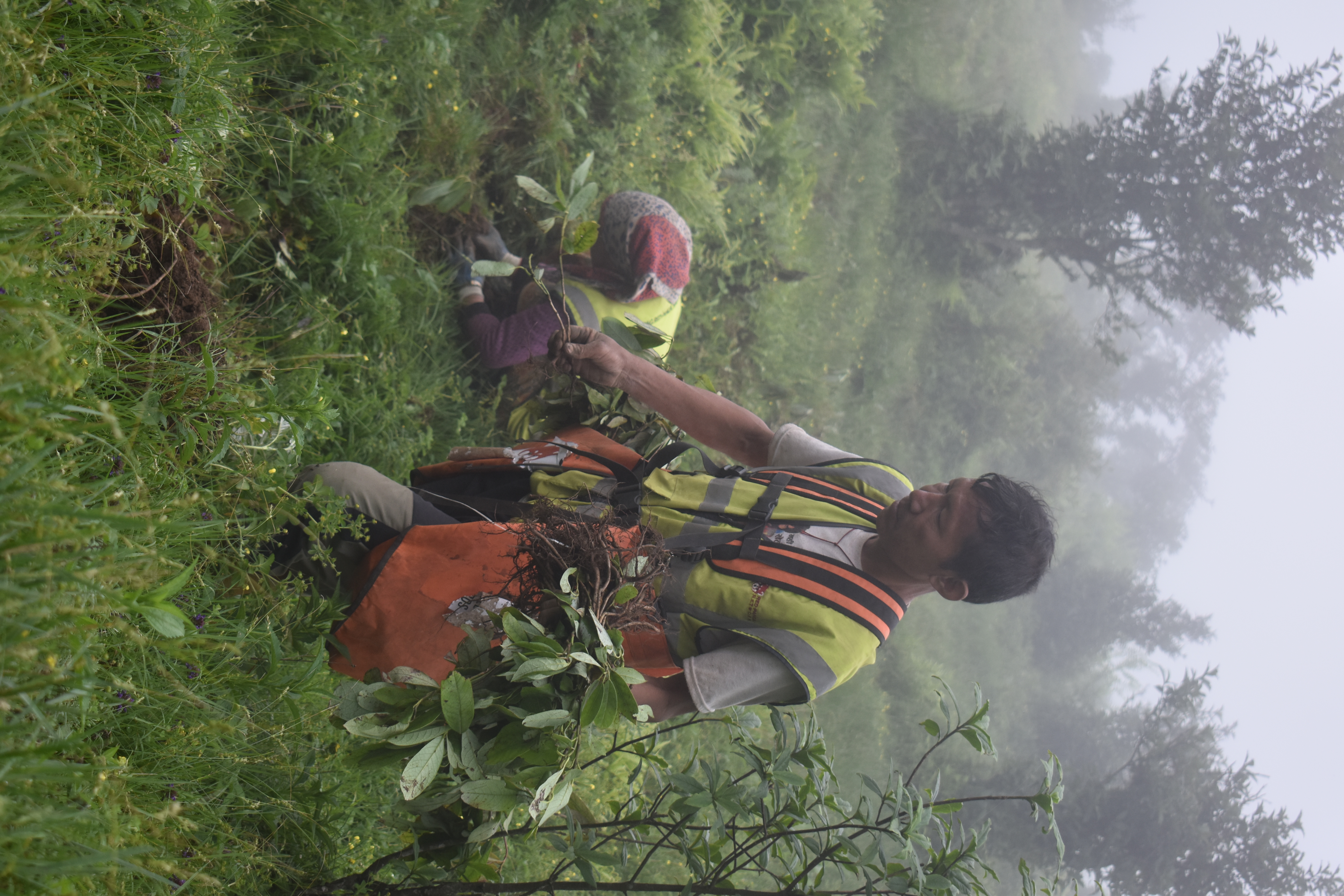
Jaubari is on the Nepal-India border in Sandakpur Rural Municipality, Ilam district, eastern Nepal. Restoring this area will result in a 630 hectares of forest corridor that connects protected areas in Nepal with Singalila National Park in India.
This initiative in Jaubari is part of our landscape-level restoration campaign, 'Plant a Red Panda Home.' The objective is to alleviate the adverse effects of deforestation in Nepal and create a continuous, community-protected forest corridor where red pandas and other threatened wildlife can thrive.
How does it work? We plant trees, install fences to protect newly planted saplings, purchase private lands in critical habitat areas, and enhance the local economy through green jobs.
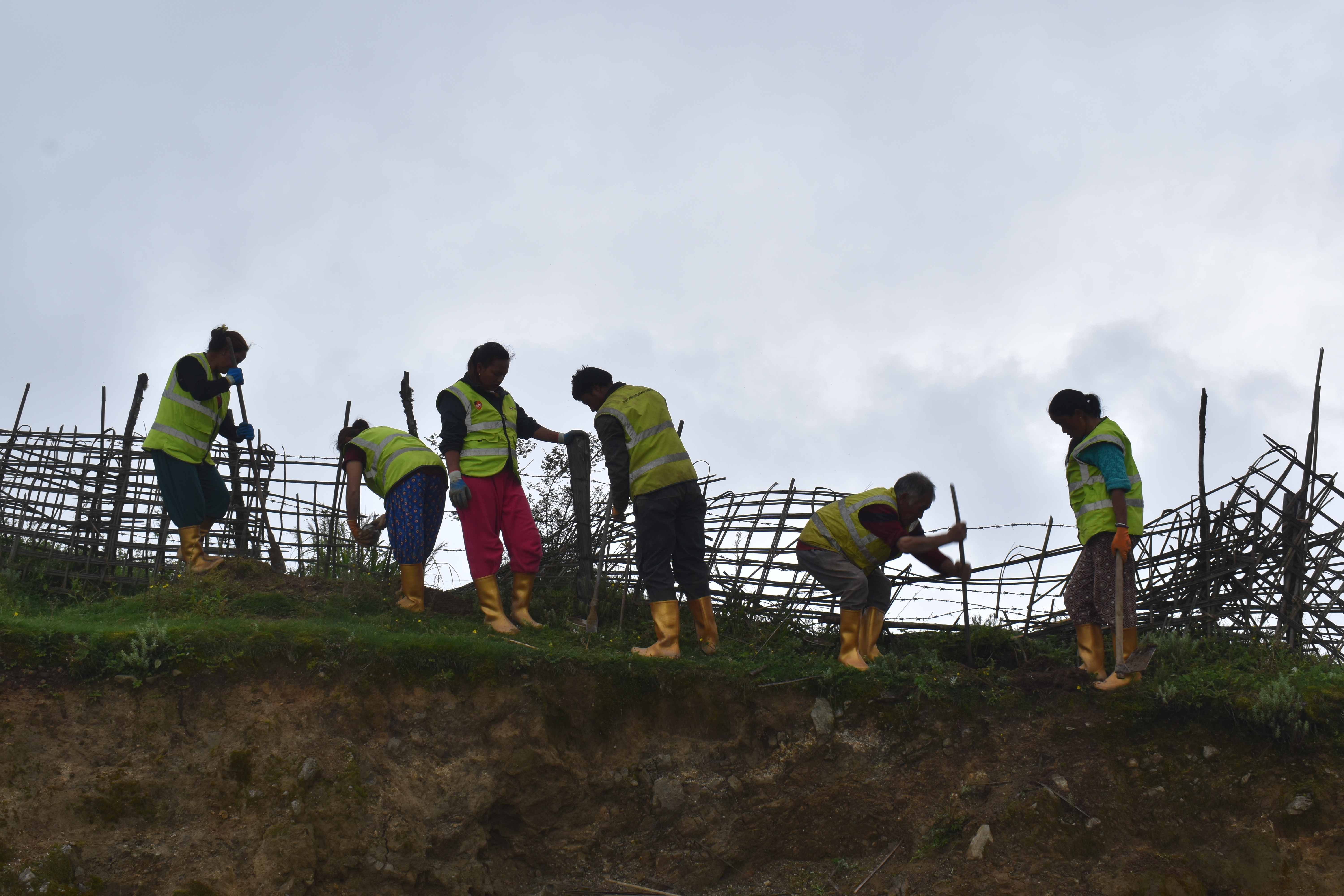
Since we started Plant A Red Panda Home in 2019, we have planted 336,380 trees! We have reforested 461 hectares of red panda habitat in Nepal. Thanks to our incredible donors, we have planted over 84,000 trees this year, purchased approximately 10 hectares – and surpassed our goal in Jaubari by planting 54,815 saplings in over 35 hectares!
Special thanks to the Whitely Fund for Nature (restoring 100 hectares of red panda habitat) and World Wildlife Fund (planting 20,000 native saplings this year) for their generous support of Plant A Red Panda Home.
There are more reasons to feel hopeful: red pandas (and other wildlife) are returning to Jaubari! "We just set up a camera there. It is confirmed that red pandas come here," Sonam says in the Habre Guff-Gaff episode after sharing a photo of a red panda from a camera trap we installed at the restoration site.
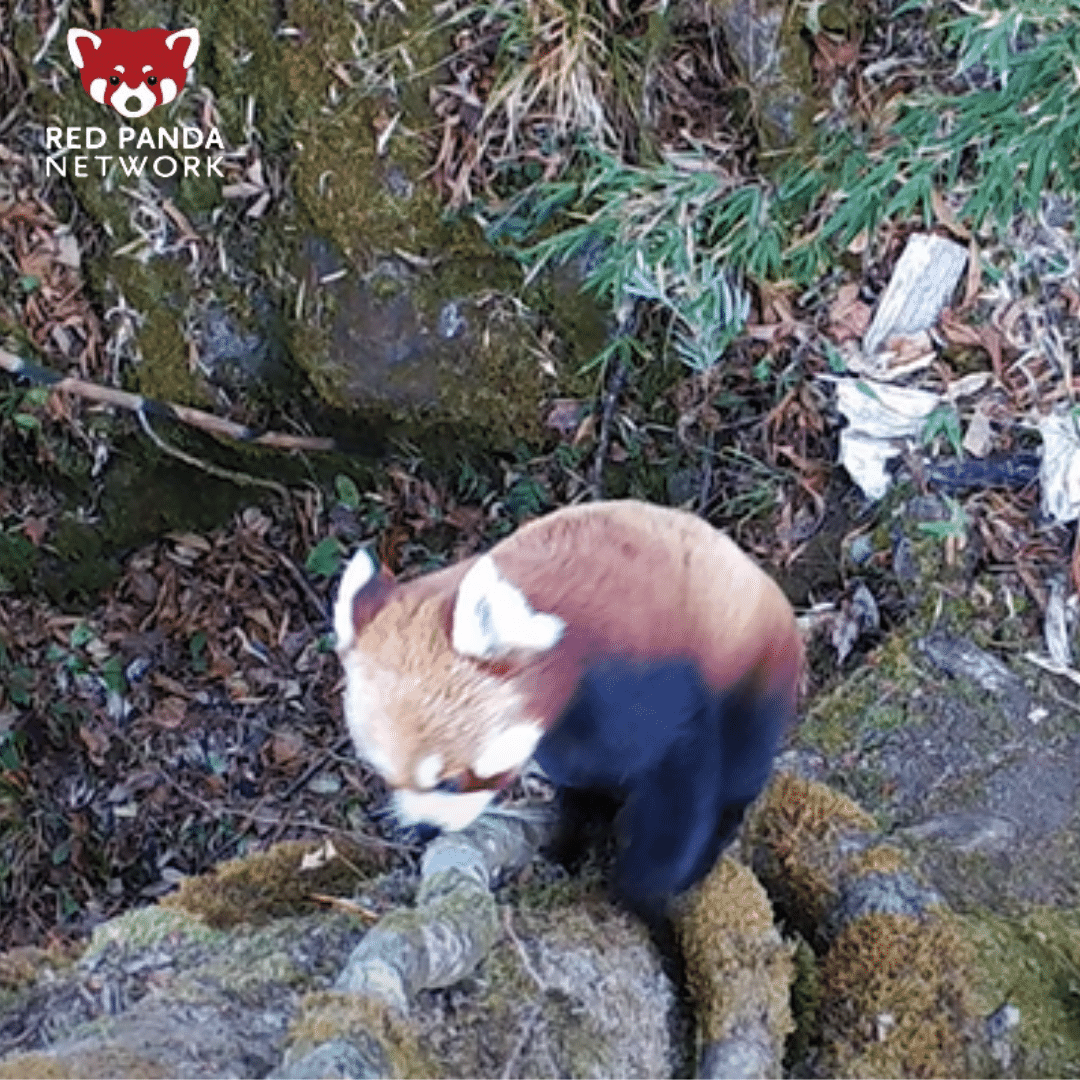
A camera trap photo of a red panda in Jaubari. © RPN
An impact like this couldn't come soon enough for the endangered red panda, which is experiencing tremendous habitat loss and fragmentation. Forests are being converted for agriculture and settlement and degraded by unsustainable herding and resource harvest. In Nepal, red panda habitat is fragmented into more than 400 small, primarily unprotected, forest patches. The isolation of these "habitat islands" creates a genetic bottleneck that leads to decreased survivability in red panda populations.
To be continued in Guardians of the Red Panda: Pema Pradhan.
Help us Plant A Red Panda Home in celebration of International Red Panda Day (IRPD) 2022 by starting a campaign or making a donation. All gifts matched dollar for dollar!
You can also support our restoration guardians in Jaubari through our Fifteen for the First Panda campaign! 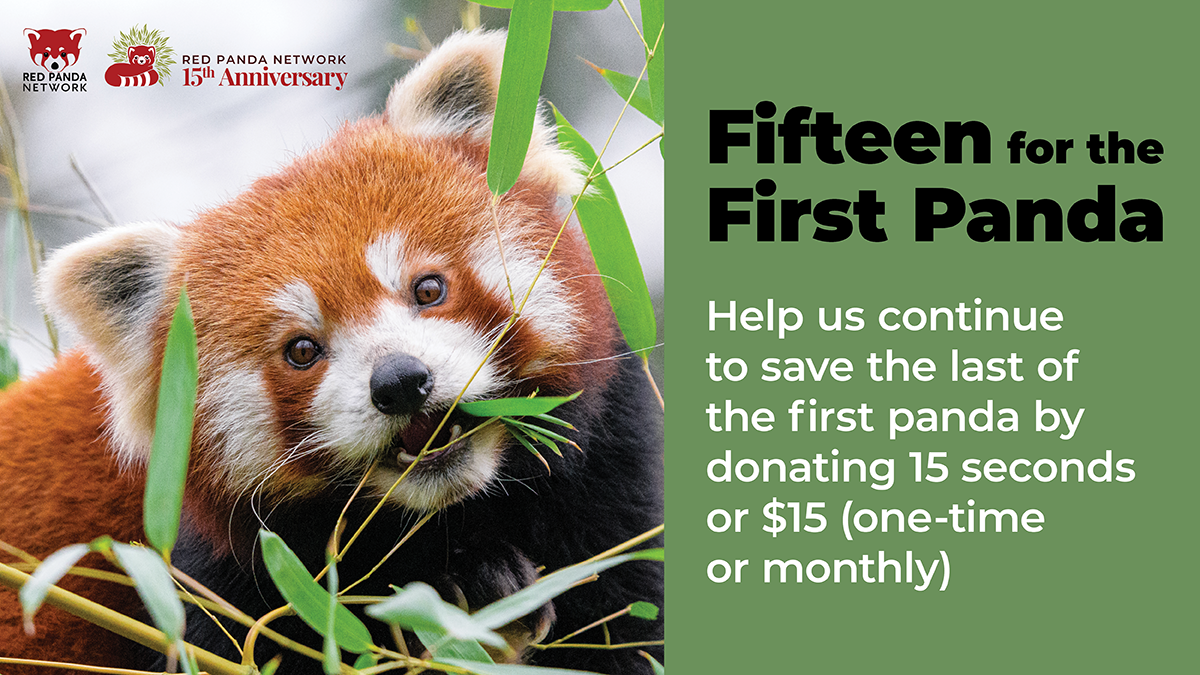
Learn more about our work in this important place!
Red Pandas Return To Jaubari – Part 1
Red Pandas Return To Jaubari – Part 2
